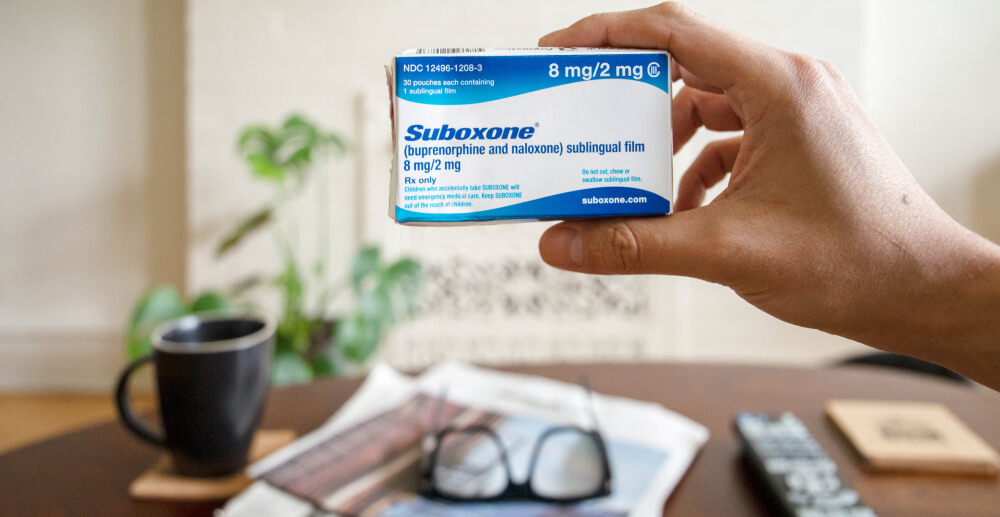The Sinclair Method is a form of medication-assisted treatment for alcohol use disorder that uses the drug naltrexone to help you moderate or quit consuming alcohol.
What is the Sinclair Method?
The Sinclair Method (TSM) is a treatment program for alcohol use disorder (AUD) developed by, you guessed it, a guy named Dr. John D. Sinclair. TSM uses a process called pharmacological extinction to change your drinking habits. Pharmacological extinction. That sounds scary, right? Well, let me explain: pharmacological extinction is a technical (and epic) way of saying that TSM basically reteaches the brain, with the help of medication, to not associate alcohol with pleasure. The idea is that you are not addicted to the actual alcohol, instead, you are addicted to the pleasurable experience associated with drinking, that warm buzz you get after one (or more) drinks of your favorite hard beverage. By breaking the link between alcohol and pleasure, you will no longer feel the compulsion to drink or be unable to stop drinking once you start, the hallmarks of AUD.
Alcohol use disorder is different than liking alcohol, it is an actual addiction. The American Society of Addiction Medicine defines addiction as follows:
Addiction is a primary, chronic disease of brain reward, motivation, memory and related circuitry. Dysfunction in these circuits leads to characteristic biological, psychological, social and spiritual manifestations. This is reflected in an individual pathologically pursuing reward and/or relief by substance use and other behaviors.
Addiction is characterized by inability to consistently abstain, impairment in behavioral control, craving, diminished recognition of significant problems with one’s behaviors and interpersonal relationships, and a dysfunctional emotional response. Like other chronic diseases, addiction often involves cycles of relapse and remission. Without treatment or engagement in recovery activities, addiction is progressive and can result in disability or premature death.
It’s a long definition but it’s a good one. At its heart, addiction is a chronic brain disease that hijacks our pleasure and reward pathways. TSM uses a medication, naltrexone, to help tamp down on those hijacked pathways to give you a better chance at changing your relationship with alcohol.
Read more: Should you should moderate your alcohol intake or quit drinking entirely?
What is naltrexone?
Naltrexone is a drug that has been approved by the US FDA to treat Alcohol Use Disorder since 1994. It is an opioid antagonist, meaning that it binds to and shuts down the brain’s opioid receptors which play a crucial role in the brain pathways that make it hard to resist alcohol. You may have heard of naltrexone in its injectable form, Vivitrol, which Workit Health offers uses to treat Opioid Use Disorder. The Sinclair Method, on the other hand, uses the pill-form of naltrexone (brand name Revia) and is only taken when you intend to drink.
Wait, you mentioned opioids. But aren’t we talking about alcohol? I’m glad you asked. The word opioid (and opiates) comes from the word opium which comes from opium poppies that grow in Asia. While we all know about opioids like heroin and oxycodone, did you know that your body makes its own opioids? Yes! These own-opioids are at work in your body all the time. Our own-opioids are thought to play an important role in the pleasure response to alcohol, which is why TSM utilizes a medication that affects them.
“Once your body and brain realize that they aren’t getting the same kick out of the alcohol you are drinking, your cravings will lessen.”
Let me break it down: you take naltrexone by mouth before you drink and only before, the naltrexone then goes to work shutting down the brain’s opioid receptors. When you take that drink of alcohol, you don’t get that same pleasant experience because your opioid receptors, which are critical to this process, are out-of-commission. Once you lose that pleasurable response, you will hopefully notice that you want to drink less and less. The amount you drink will drop as your urge to drink does. You can keep going until you can successfully quit or until your appetite for alcohol is at an acceptable level for how much you want to drink.
Why am I still drinking during the Sinclair Method?
For the Sinclair Method to work, you need to break the link between the pleasure response, fueled by your own-opioids, and alcohol. Once your body and brain realize that they aren’t getting the same kick out of the alcohol you are drinking, your cravings will lessen. TSM also has the added benefit of not being overly-disruptive in a person’s life. If you drink socially, you can still do so with TSM as long as you pop naltrexone beforehand. Lastly, depending on the severity of your alcohol addiction, quickly changing the amount of alcohol you consume can be dangerous. TSM allows you to more safely taper off to no or lower amounts of alcohol over time.
Why should I consider moderating/quitting alcohol?
Alcohol is second only to tobacco is negative impacts on public health among addictive substances. Drunk-driving is probably the most well-known of negative impacts related to alcohol use. Not only do you run the risk of a deadly crash, 29% of all traffic-related deaths are related to alcohol, but being caught driving under the influence can cost you a hefty fine and/or land you in jail. Another well-known consequence of alcohol is violence. While alcohol is never the sole cause of interpersonal violence, it can add fuel to an already dangerous situation.
“Regardless of your reason for wanting to change your relationship with alcohol, there are options for help.”
Even if you don’t drive or get violent when you drink, heavy drinking causes long-term consequences. The liver is probably the most harmed by drinking. Alcoholic fatty liver disease, a condition where fat is deposited where it doesn’t belong in the liver, can lead to a more serious condition called cirrhosis, severe scarring of the liver. It is estimated that 10-15% of alcoholics will develop cirrhosis. Alcohol is also related to certain cancers and heart conditions.
You don’t need to have serious health or behavioral concerns to want to quit or moderate your alcohol intake. You might not like alcohol’s effect on you or you think that your drinking is inconsistent with your values. Regardless of your reason for wanting to change your relationship with alcohol, there are options for help.
Is the Sinclair Method my only option for recovery?
NO! While the Sinclair Method has helped many people change their drinking habits, there are multiple options out there for you. Here at Workit Health, our treatment programs for alcohol use disorder can include medication but do not have to. They include personalized, interactive courses and support from recovery groups to help you understand and change your relationship with alcohol.
Abstinence programs like Alcoholics Anonymous work for many people but they are by no means the only way to find help. If AA or related abstinence programs have failed you, consider Workit Health’s innovative and evidence-based approach to addiction treatment.
Naltrexone is not the only medication for AUD. There are many medications to treat alcohol addiction, as well as many other types of addiction. The dedicated care team at Workit will work with you to come up with the best treatment plan for you.








